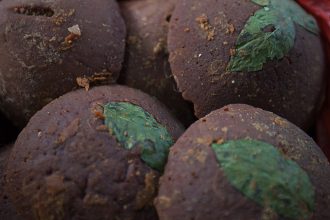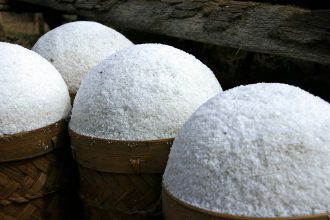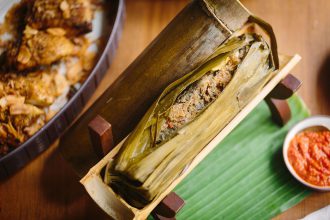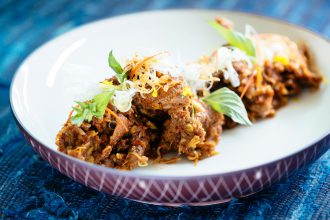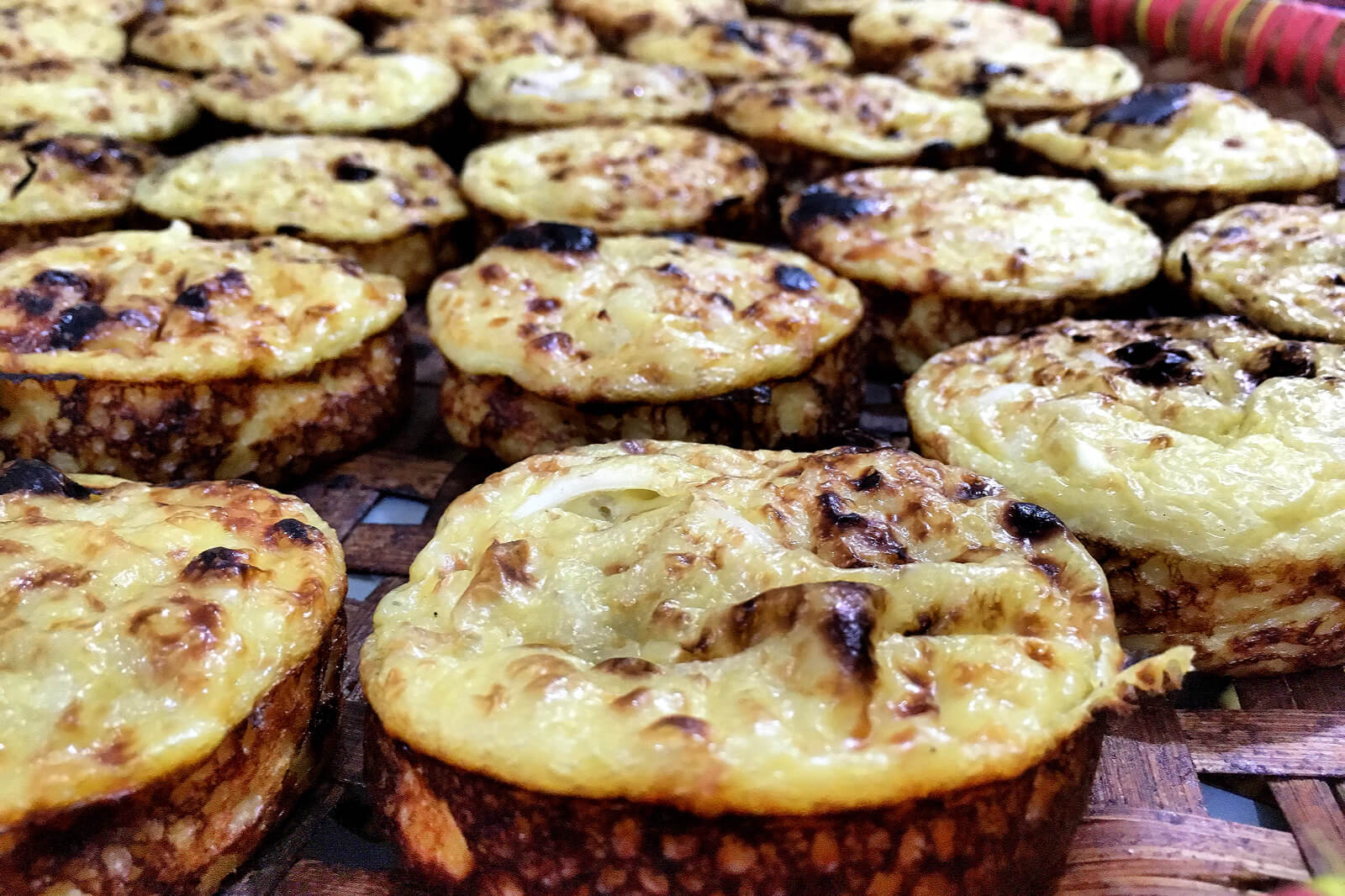
Boarding the plane for a one-day trip just to buy your favourite food. Ever been in that situation?
I am willing to do it, but only for my two favorite Indonesian snacks. These amazing snacks can’t be ordered online and delivered, they are freshly made each day, cooked with great attention to details, and are very simple to make yet sublime in taste. My carbon footprint isn’t the most responsible due to this obsession, but allow me to assuage my guilt a little by sharing one of my absolute favourite Indonesian snacks, kue lumpur, with you.
Soon after we completed our culinary research tour on Madura island, we made a brief stop in Surabaya, the capital city of East Java. A rich melting pot in terms of culinary culture, Surabaya has great authentic eateries and unique dishes located not only around the city, but hundreds of kilometers outside as well. I took Chef Antoine to taste the famous Sidoarjo kue lumpur (mud cake), located near the Chinese temple in the centre of Sidoarjo, located an hour-and-a-half hour drive from Surabaya. Antoine’s eyes were lit up when I told him this specific mud cake is a transcendental gastronomic experience for me. So transcendental that I am willing to do a one-day trip from Jakarta to Surabaya just to buy this mud cake then go directly back to Jakarta as soon as I finished devouring them!
When we arrived in Sidoarjo we were welcomed by enthusiastic group of men performing a live baking session in front of a humble house on Jalan Hang Tuah. Profuse heat of charcoal, fresh egg custard fragrance, and evergreen young coconut shape resembled a symphony of culinary magic in the open kitchen.
No one could trace the history of kue lumpur in Indonesia, but a good theory is that kue lumpur perhaps shares a history with Portuguese egg custards pastries (pastel de nata), made famous by Belem monastery. Thanks to Portuguese conquistadors and missionaries, the country’s culture and foods, including egg tarts, made their way around the world, adapting to local tastes and ingredients.
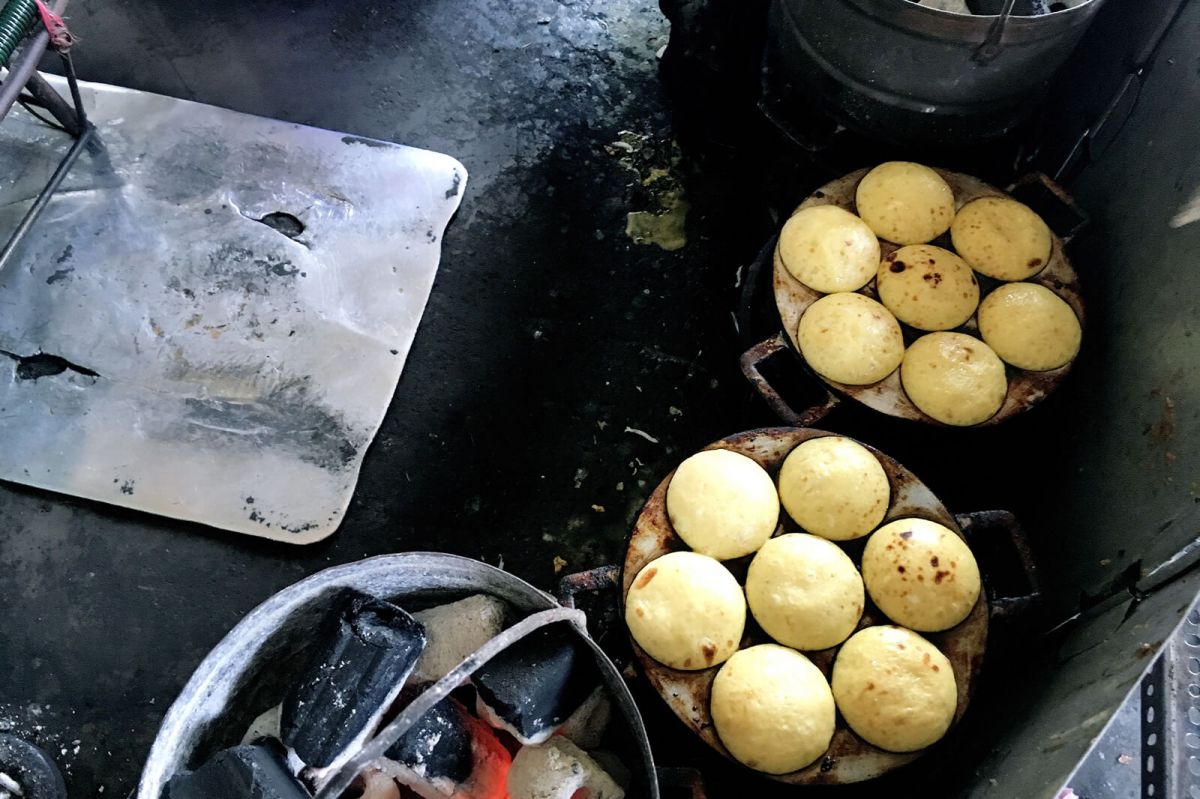
The kue lumpur in Indonesia that used to be sold by Chinese Peranakan ladies had a custardy texture, thanks to a mix of eggs, flour, coconut milk and sugar. But now it is much more common to find kue lumpur with a firmer texture due to a recipe that includes mashed potato and flour with raisins and young coconut flesh as toppings.
Mrs. Lilik, the baker of the heavenly Sidoarjo kue lumpur, still uses a family recipes and has never been tempted to turn her humble business into a commercial ventures. She started making the cakes after her husband lost his job and not long after, the family recipe became a hit among locals. Her kue lumpur has rich custard texture and is filled with fresh young coconut. Another unique feature of Mrs. Lilik’s cakes comes from her original baking technique: stamping each cake with hot charcoal. This special touch adds a unique caramelised texture to each cake that can’t be found anywhere else.
We were inspired by the warmth of Mrs. Lilik’s team as they shared their stories and best secrets, which ended up not being a secret at all – you have to pay close attention to the ingredients.
Paying tributes to Mrs. Lilik’s craftsmanship, we decided to recreate her Sidoarjo kue lumpur step-by-step and serve them during the Kaum Pop Up Event at Attarine Jakarta, Gunawarman a few weeks back. It was a hit with diners and the media! Chef Antoine also introduced this snack at Kaum Hong Kong and international gourmands raved about it. Now, it is time for us to finally make it official. Kue lumpur will be included in our Kaum Menteng menu.
Be the first one to taste it in our new establishment in Jakarta. You won’t be sorry!
CONTINUE THE JOURNEY
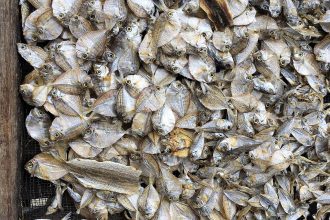
For many Indonesians, salted fish is one of life’s simple pleasures. We are perfectly content enjoying steamed rice, salted fish and a fiery sambal (chilli relish), devouring all with our right hand. Happiness is purely simple for most Indonesians!
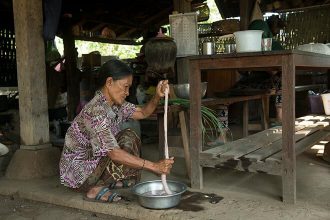
Singaraja totally captivates us…”
Lisa Virgiano is brimming with enthusiasm for the local produce she and the Kaum culinary collective have discovered in Bali’s oldest port.
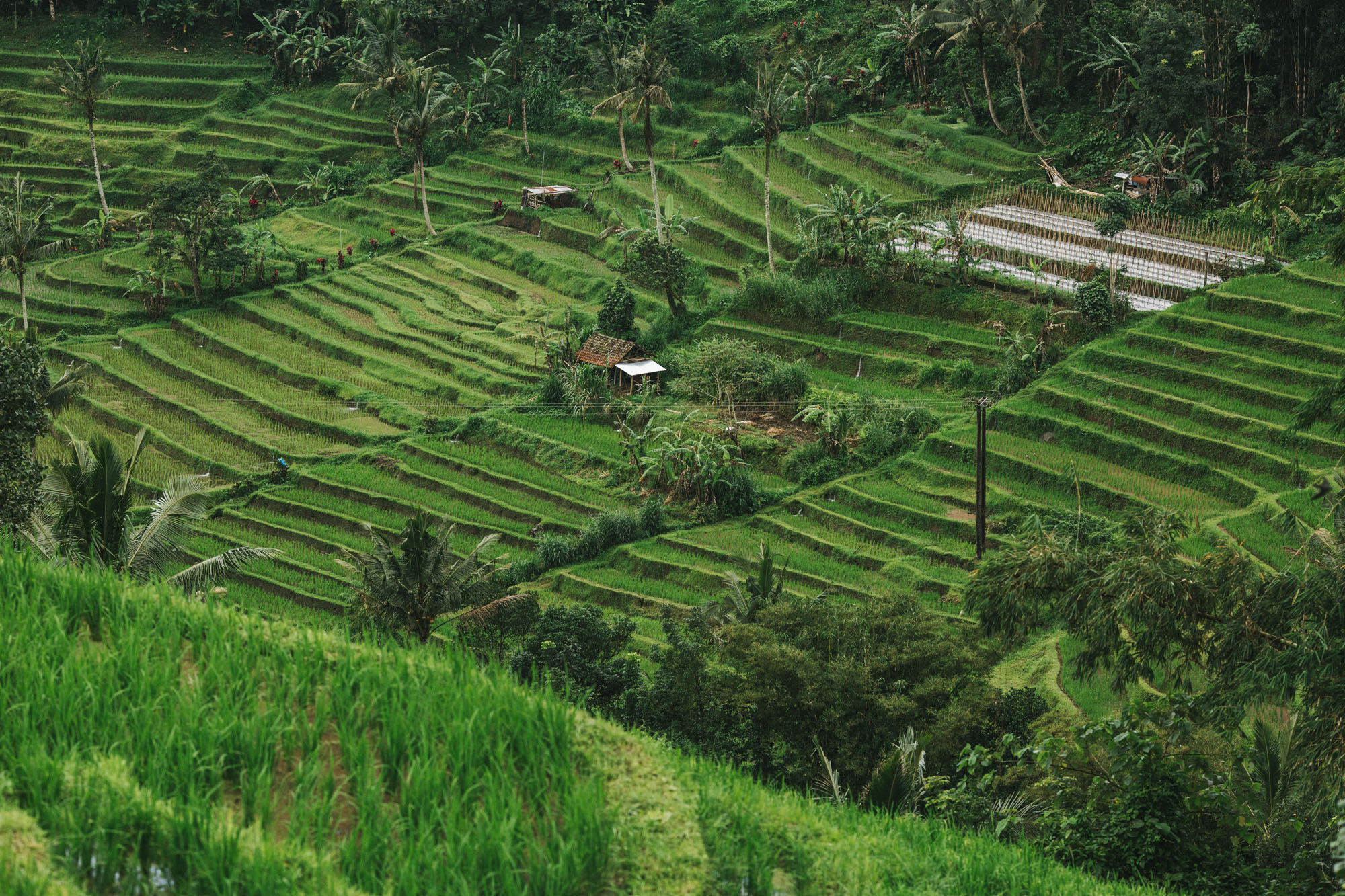
Rice is an essential commodity in Indonesia. Nowadays, most Indonesians think of rice not only as an indispensible component to any meal, but also as a kind of “sacred” staple. But has this forever been the case? Have Indonesians always consumed rice as part of their daily diet?
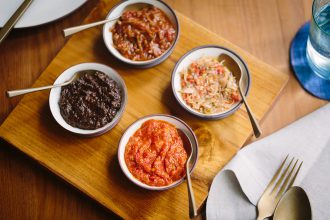
Chilli relish (sambal) is an imperative Indonesian condiment, served with almost every Indonesian dish. It arouses the appetite, ignites the senses, and complements the taste.
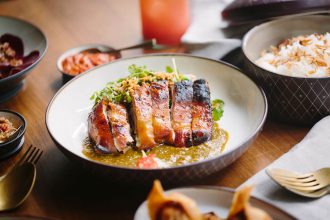
Bali has been part of the Asian trading network since the 15th century. Traders from Java brought rice and salt which could later be exchanged for cash crops, including pepper from Sumatra, spices from the Moluccas, and cotton from Bali.
